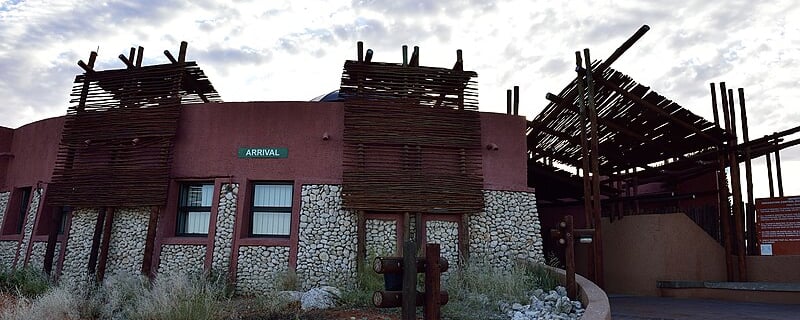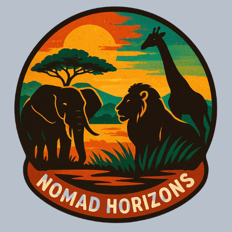Transboundary Conservation Areas in Southern Africa


A Beacon of Collaboration and Biodiversity Preservation.
Today, we are exploring a vital topic: protecting the planet's biodiversity through inspiring transboundary conservation initiatives in Southern Africa, which highlight remarkable international cooperation.
Southern Africa features some of the world's most awe-inspiring landscapes, from sun-drenched savannahs to dense, ancient forests and glistening floodplains teeming with wildlife. However, nature does not recognize political boundaries.
Rivers, mountains, and migration corridors flow through borders without regard for the maps created by human hands. Recognizing this, seven southern African nations have united to establish Transboundary Conservation Areas (TFCAs), vast ecological havens where wildlife can roam freely across borders and where nations collaborate to protect biodiversity.
These TFCAs represent a visionary approach to conservation, transcending divisions of geography, culture, and politics. Countries such as South Africa, Botswana, Namibia, Zimbabwe, Mozambique, Zambia, and Angola have set aside their differences to align their efforts in safeguarding a shared natural heritage. What were once borders of tension are now corridors of cooperation. This article explores the most prominent transfrontier parks, each a breathtaking example of nature unbound and diplomacy at its finest.
Southern Africa's Unique Approach
1. Kgalagadi Transfrontier Park (South Africa and Botswana)


Imagine an endless expanse of ochre-red dunes stretching to the horizon, interrupted only by patches of resilient acacia trees and tufts of golden grass. This is the Kgalagadi Transfrontier Park, one of the first officially established transboundary parks in southern Africa, straddling the border between South Africa and Botswana.
Spanning over 38,000 square kilometers, this semi-arid desert is a land of extremes, where temperatures can soar to 40°C during the day and plummet to near freezing at night. Yet, it is home to some of the region's most iconic species. Black-maned lions patrol the dry riverbeds, their powerful silhouettes framed by the shimmering mirage of heat. Herds of gemsbok, their long, straight horns like spears, graze alongside springbok, often leaping gracefully in the air in displays known as pronking.
Birdlife also thrives here, with raptors like the pale chanting goshawk soaring against the cobalt sky and the striking crimson-breasted shrike darting among the thorny shrubs. The landscape feels timeless, its silence broken only by the distant roar of a lion or the chatter of sociable weavers nesting in the acacias.
This park exemplifies the triumph of cross-border collaboration, offering a seamless experience for travelers who can move between the two nations without needing to pass through a traditional border post. For wildlife, it means uninterrupted migratory routes and larger territories for species that require vast ranges to thrive.
2. Kavango-Zambezi Transfrontier Conservation Area (KAZA TFCA)
The Kavango-Zambezi Transfrontier Conservation Area, also known as the KAZA TFCA, covers over 520,000 square kilometers and spans five countries: Angola, Botswana, Namibia, Zambia, and Zimbabwe.
At the heart of KAZA lies the iconic Okavango Delta, a sprawling oasis of life amid Botswana's Kalahari Desert. Every year, the waters of the Okavango River swell during the rainy season, flooding the delta and transforming it into a paradise of twisting channels, crystalline lagoons, and emerald islands. Elephants wade knee-deep in the waterways, their trunks curling to pluck sweet reeds from the marsh. Hippos submerge in the tranquil waters by day and emerge at night to graze.
But KAZA's wonders extend beyond the delta. In Namibia's Caprivi Strip, the Kwando River winds through lush woodlands where leopards lurk in the shadows and African wild dogs hunt in packs, their mottled coats blending into the dappled light. Meanwhile, Zimbabwe's Hwange National Park and Zambia's Kafue National Park present wide-open savannahs where wildebeest, zebras, and buffalo roam, always on alert for predators.
Of course, the jewel in the crown is Victoria Falls, where the mighty Zambezi River plunges into a gorge with such force that a permanent mist rises, creating rainbows that dance in the sunlight. This natural wonder—known locally as "Mosi-oa-Tunya" or "The Smoke That Thunders"—serves as a fitting symbol of nature's power and our shared responsibility to protect it.
3. Great Limpopo Transfrontier Park (South Africa, Mozambique, and Zimbabwe)
In the continent's southeast lies the Great Limpopo Transfrontier Park, a conservation area that joins South Africa's world-famous Kruger National Park with Mozambique's Limpopo National Park and Zimbabwe's Gonarezhou National Park. Together, they form an uninterrupted wilderness of over 35,000 square kilometers, providing a haven for Africa's Big Five—lion, leopard, elephant, rhinoceros, and buffalo.
The park's landscapes are a study in contrast. To the south, Kruger's dense mopane woodlands give way to open savannahs dotted with marula trees, where herds of elephants feed, their tusks glinting in the sunlight. Moving east into Mozambique, the terrain becomes more rugged and remote, with fewer roads and an untamed feel that appeals to adventurers seeking solitude.
Zimbabwe's contribution, Gonarezhou, is known as the "Place of Elephants" because of its large populations of these gentle giants. The Chilojo Cliffs, towering red sandstone formations carved by millennia of wind and water, provide a dramatic backdrop to the park's sweeping plains. Below, the Runde River meanders lazily, attracting thirsty herds of wildlife, from waterbuck to impala.
The establishment of this transfrontier park has not been without its challenges. In particular, Mozambique's Limpopo National Park has required significant infrastructure investment and anti-poaching measures. However, the cooperation between these nations is a powerful testament to what can be achieved when conservation takes precedence over politics.
4. Lubombo Transfrontier Conservation and Resource Area (South Africa, Mozambique, and Eswatini)
Nestled in the southeastern corner of the region is the Lubombo Transfrontier Conservation Area, where South Africa, Mozambique, and Eswatini converge. This area is known for its stunning variety of ecosystems, ranging from coastal wetlands to mountain ranges. It hosts several smaller protected zones, creating a vital ecological corridor.
The heart of this conservation area is iSimangaliso Wetland Park in South Africa, a UNESCO World Heritage Site. Here, sandy beaches stretch for miles, lapped by the warm waters of the Indian Ocean. Inland, vast swamps and reedbeds provide sanctuary to hippos, crocodiles, and flocks of pink flamingos. Migratory birds use this area as a stopover, filling the air with their calls as they gather in the shallows.
Moving into Mozambique, the Maputo Special Reserve offers a diverse landscape of coastal forests, grasslands, and mangroves. Thanks to conservation efforts, elephants have returned to this area in increasing numbers, and visitors may even spot them wandering along the shore. In Eswatini's Hlane Royal National Park, white rhinos graze peacefully, protected by local rangers who tirelessly patrol to deter poachers.
The Lubombo region exemplifies how transboundary cooperation reconnects fragmented ecosystems, enabling wildlife to thrive and allowing local communities to benefit from ecotourism initiatives.
5. Malawi-Zambia Transfrontier Conservation Area
Nestled between Malawi and Zambia, this lesser-known TFCA showcases the beauty of southern Africa's less-trodden paths. At its heart are two protected gems: Malawi's Nyika National Park and Zambia's North Luangwa National Park.
Nyika National Park is unlike any other place in southern Africa. Its high-altitude grasslands, blanketed in wildflowers during the rainy season, resemble a rolling alpine meadow more than the traditional African bushveld. Zebras graze in these flower-strewn pastures, while elusive roan antelopes wander through the mist that often clings to the hills. Streams tumble down rocky slopes, their crystal-clear waters provide a home to rare frogs found nowhere else on Earth.
Across the border, North Luangwa presents a raw, untamed wilderness where wildlife populations are gradually recovering. This park serves as a stronghold for black rhinos, reintroduced through intensive conservation efforts. Lions prowl the riverbanks, while vast herds of buffalo stir up dust clouds as they move across the park's golden plains.
Malawi and Zambia's partnership in managing this TFCA has restored ecosystems and empowered local communities to take pride in their natural heritage through sustainable tourism and conservation-driven livelihoods.
6. Ai-Ais/Richtersveld Transfrontier Park (South Africa and Namibia)
The Ai-Ais/Richtersveld Transfrontier Park lies at the northwestern edge of South Africa, where the Orange River forms a natural boundary with Namibia. This rugged desert landscape is a study in contrasts, featuring jagged mountain peaks that give way to deep canyons and sweeping plains of sand and rock.
In South Africa, the Richtersveld site is a UNESCO World Heritage Site recognized for its unique botanical diversity. Succulent plants thrive in this harsh environment. Their waxy leaves adapted to store water during the day's searing heat. With its twisted, yellow-green branches, the iconic quiver tree stands like a sentinel over the arid plains.
Crossing the Orange River into Namibia, the terrain becomes even more desolate yet hauntingly beautiful. The Fish River Canyon, the second-largest canyon in the world, slices through the landscape in dramatic fashion, its walls glowing red and gold in the soft light of sunrise. Visitors hiking its trails are rewarded with breathtaking vistas and encounters with desert-adapted wildlife, such as mountain zebras and klipspringers.
This transfrontier park is not just a haven for unique flora and fauna but also a cultural treasure. The semi-nomadic Nama people, who have lived in this region for generations, continue to practice their traditional way of life, herding livestock and crafting intricate jewelry from natural materials.
Conservation Beyond Borders: A Legacy for the Future
Establishing Transboundary Conservation Areas in southern Africa represents a significant advancement in the effort to protect our planet's most valuable resources: biodiversity and cultural heritage. These TFCAs serve as a reminder that conservation knows no borders and that the health of our ecosystems relies on collaboration and shared responsibility.
From the shimmering waters of the Okavango Delta to the stark beauty of the Kalahari Desert, these parks serve as not only sanctuaries for wildlife but also symbols of hope—proof that when nations collaborate, the results can be extraordinary. As travelers, we also have a role to play. By visiting these transfrontier parks responsibly, supporting local communities, and advocating for conservation, we can help ensure that these magnificent landscapes remain unspoiled for generations.
So, lace up your boots, pack your binoculars, and step into a world where nature reigns supreme and the spirit of cooperation triumphs over division. Southern Africa's Transboundary Conservation Areas are calling, are you ready to respond?
